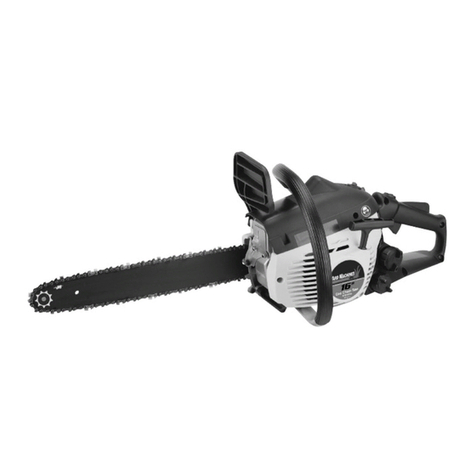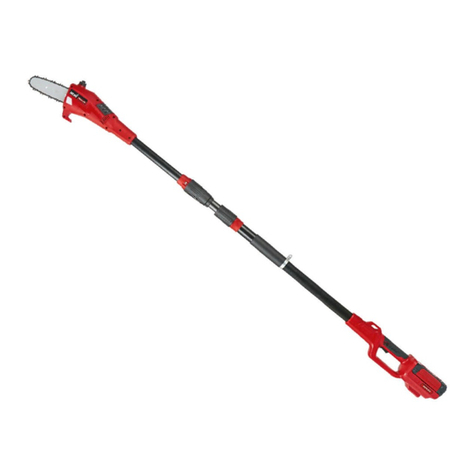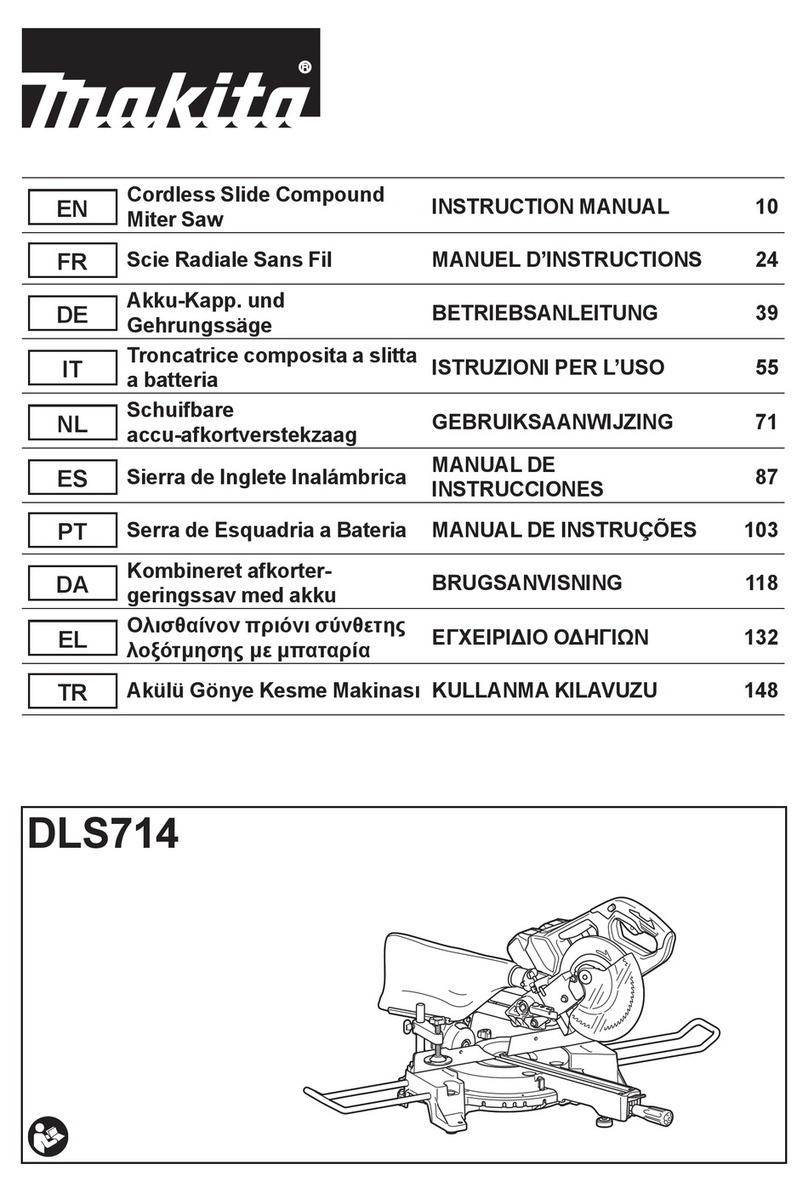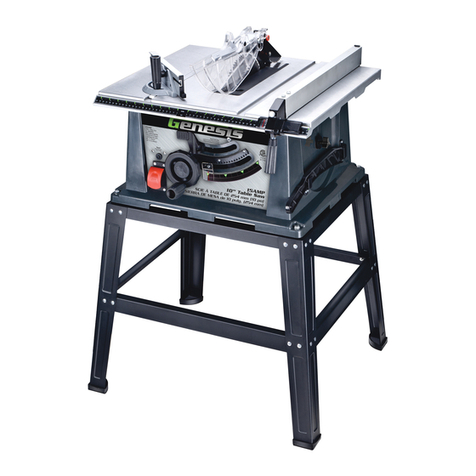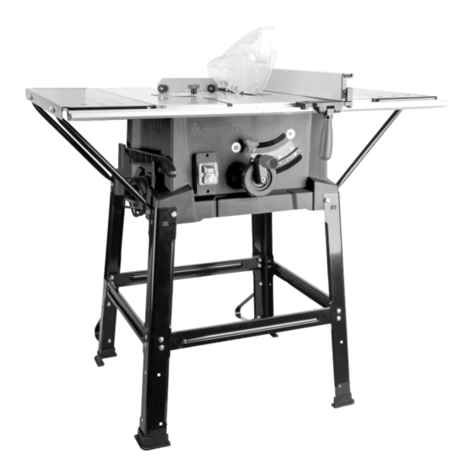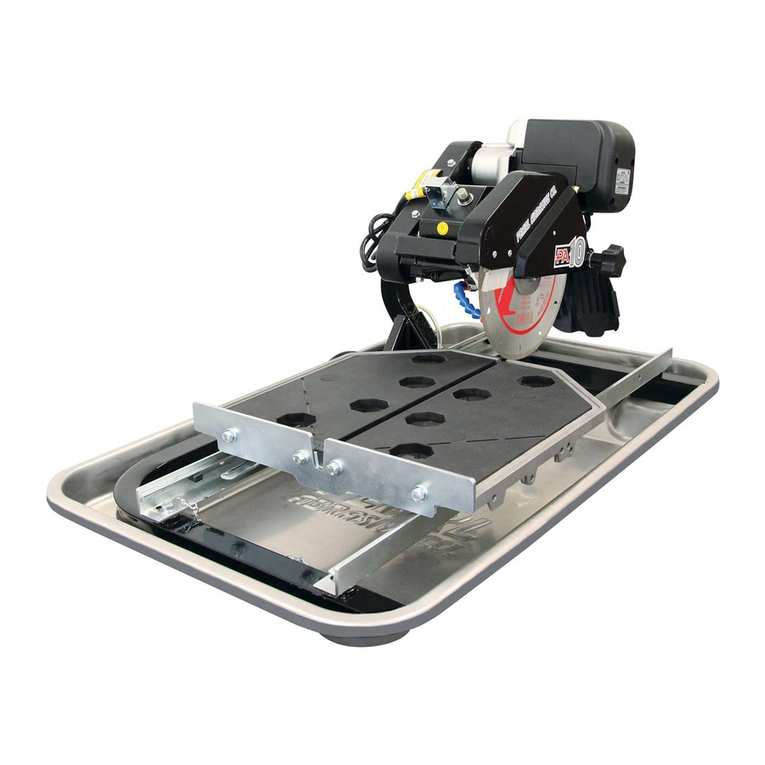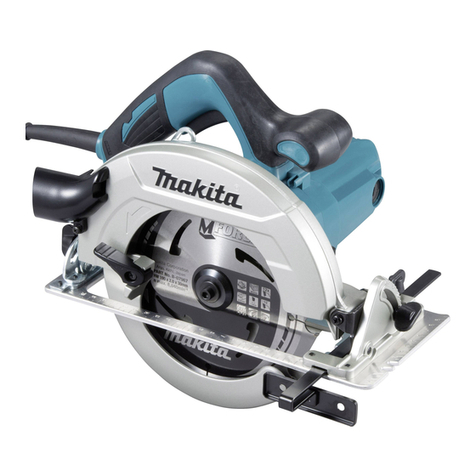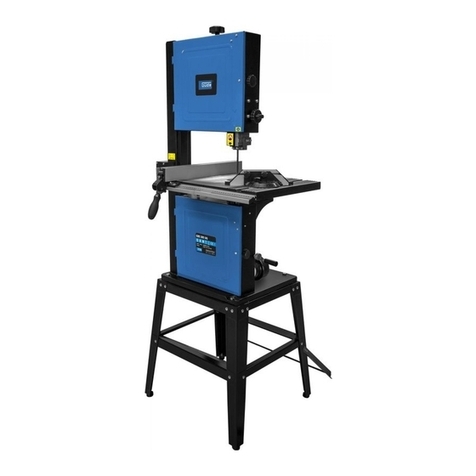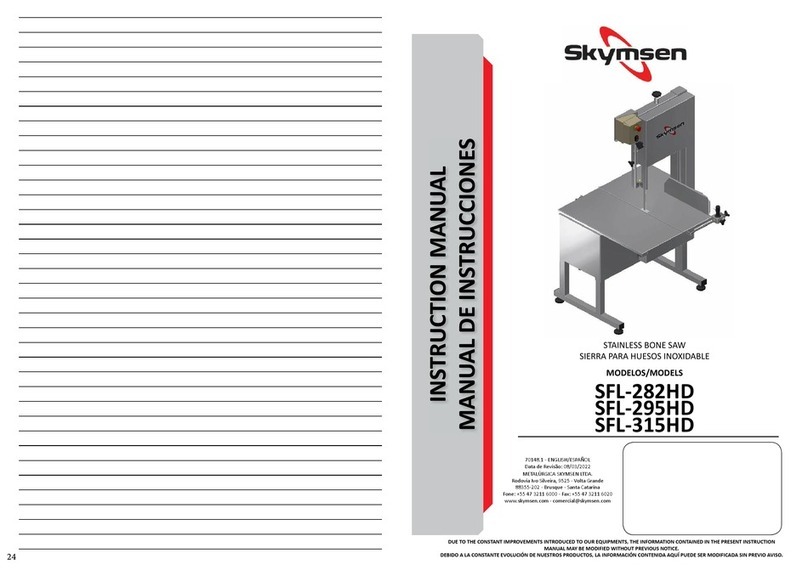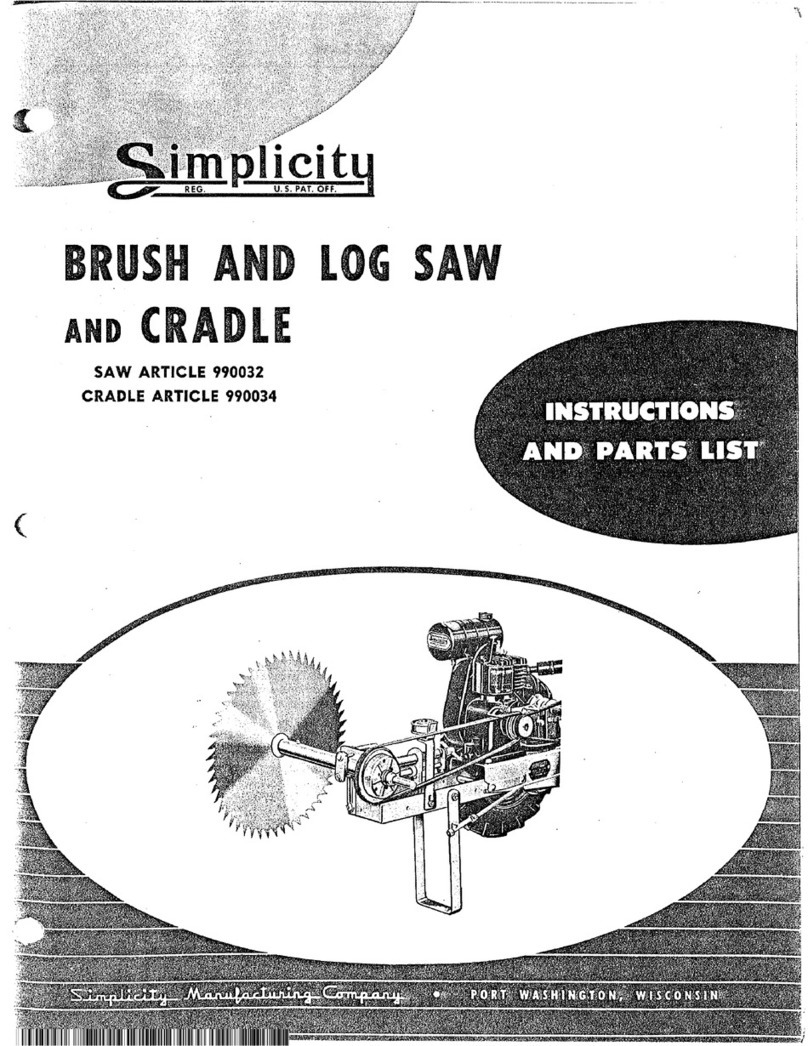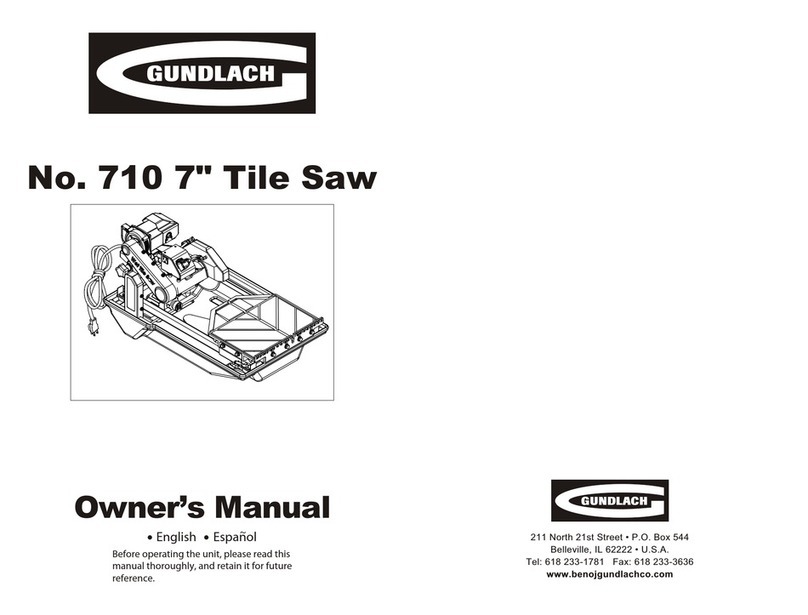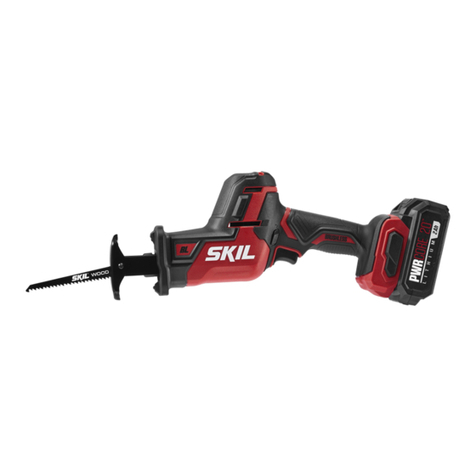MTD GCS 4100/40 User manual

jqa=mêçÇìÅíë=^âíáÉåÖÉëÉääëÅÜ~Ñí=√=p~~êÄêΩÅâÉå=√=dÉêã~åó
C 17
FORM NO. 769-09269C
!




20 21
0,6-0,7mm
CHAIN OIL
MAX
MIN
CHAIN OIL
MAX
MIN
1
AB


English . . . . . . . . . . . . . . . . . . . . . . . 8
(Original operating instructions)
Français . . . . . . . . . . . . . . . . . . . . . . 18
(Notice d’instructions d’origine)
Deutsch . . . . . . . . . . . . . . . . . . . . . . . 30
(Originalbetriebsanleitung)
Nederlands . . . . . . . . . . . . . . . . . . . . 41
(Originele gebruiksaanwijzing)
Italiano . . . . . . . . . . . . . . . . . . . . . . . 52
(Istruzioni per l’uso originali)
Español . . . . . . . . . . . . . . . . . . . . . . . 63
(Instrucciones de funcionamiento originales)
Svenska . . . . . . . . . . . . . . . . . . . . . . 75
(Originalbruksanvisning)
Dansk . . . . . . . . . . . . . . . . . . . . . . . . 85
(Originale driftsvejledning)
Norsk . . . . . . . . . . . . . . . . . . . . . . . . 95
(Originale driftsanvisningen)
Suomi . . . . . . . . . . . . . . . . . . . . . . . . 105
(Alkuperäinen käyttöohjekirja)
Português . . . . . . . . . . . . . . . . . . . . . 115
(Instruções de serviço originais)
Ελληνικά . . . . . . . . . . . . . . . . . . . . . . 126
(Αυθεντικές οδηγίες χειρισμού)
Magyar . . . . . . . . . . . . . . . . . . . . . . . 138
(Eredeti üzemeltetési útmutató)
Polski . . . . . . . . . . . . . . . . . . . . . . . . 149
(Oryginalna instrukcja obsługi)

English Operating Instructions – Chain Saw with Combustion Engine
8
Contents
For your safety . . . . . . . . . . . . . . . . 8
Controls and display elements. . . 11
Assembling the device. . . . . . . . . 11
Oil and petrol . . . . . . . . . . . . . . . . 12
Operation . . . . . . . . . . . . . . . . . . . 13
Basic working technique . . . . . . . 14
Maintenance and cleaning . . . . . 15
Transporting . . . . . . . . . . . . . . . . 16
Shutting down the unit . . . . . . . . 16
Warranty. . . . . . . . . . . . . . . . . . . . 16
Troubleshooting . . . . . . . . . . . . . 16
Information on the
identification plate
These specifications are very
important for subsequent
identification when ordering spare
parts and for customer service. You
will find the identification plate in the
vicinity of the engine. Copy all the
information on this identification
plate into the following space.
You can find these and further
details on the device in the separate
CE declaration of conformity that is a
constituent part of this operating
manual.
Illustrations
Fold out the illustrated pages at the
start of the operating manual.
Various models are described in this
operating manual. Graphical
representations can vary in detail
from the device that you bought.
For your safety
Using the power tool
properly
This device is approved solely for
use
– in accordance with the descrip
-
tions and safety instructions spe
-
cified in this operating manual;
– with the authorised original saw
chains for sawing wood in the
house and garden.
The device has not been designed
for commercial use.
Any other form of use shall be
regarded as improper use.
Improper use is not covered by the
warranty and the manufacturer will
reject any liability whatsoever. The
user is then liable for all injuries to
third parties and damage to their
property.
Unauthorised changes to the device
shall exclude all liability of the
manufacturer for any resulting
damage and/or injury.
Observe the safety and
operating information
As the user of this device, read this
operating manual through carefully
before using the device for the first
time. Comply with the operating
manual and keep it for subsequent
use.
Never allow children or other people
who do not know this operating
manual to use the device.
If the device changes ownership,
hand over the operating manual with
it.
General notes on safety
– Follow all safety instructions! If
you ignore the safety instructions,
you are endangering yourself and
others.
– Check the device before using it.
Replace any damaged parts.
Check whether any fuel is running
out. Ensure that all the connec
-
tions are firmly attached and done
up tightly. If these instructions are
not followed, the user and
bystanders could be injured and
the device damaged.
– Do not use the device unless it is
in perfect working order. If the
device or a part of it is defective, it
must be repaired by a technician.
– Do not switch on the chain saw
unless the chain brake and ope
-
rating switch are in working order.
– Do not use the device in poten
-
tially explosive areas or near com
-
bustible liquids or gases!
– When the device is switched off,
always secure it to prevent it from
being switched on unintentionally.
– Keep children away from the
device! Store the device safely out
of the reach of children and
unauthorised persons.
– Do not overload the device. Use
the device only for the purposes
for which it had been designed.
– Always use the required personal
protective equipment.
– Always work with care and only
when in good health: Do not use
this device if you are tired or ill or
under the influence of alcohol,
drugs or medication.
– This device is not intended for use
by persons (including children)
with reduced physical, sensory or
mental capabilities, or with a lack
of experience and knowledge,
unless they have been given
supervision or instruction con
-
cerning the use of the device by a
person who is responsible for their
safety.
– Children should be supervised to
ensure that they do not play with
the device.
– Always observe the valid national
and international safety, health
and work regulations.
– Do not use the device if you have
not received appropriate training.
– Spare parts and accessories must
satisfy the requirements specified
by the manufacturer. Therefore
only use original spare parts and
original accessories or spare parts
and accessories that have been
authorised by the manufacturer.
The use of spare parts or acces
-
sories that have not been
approved by the manufacturer can
represent a significant safety risk.
– The saw chain and guide rail form
the cutting equipment. Only the
following cutting equipment in the
table may be used for the
respective chain saw model. The
combination of components which
do not fit can lead to injuries and
irreparable damage to the unit.
Saw chains and blades from dif
-
ferent manufacturers may not be
combined and used together.
– Repairs may only be carried out
by a service centre.

Operating Instructions – Chain Saw with Combustion Engine English
9
Raynaud’s disease (white
finger disease or HAVS)
– The frequent use of vibrating
power tools may damage the
nerves in people whose blood cir
-
culation is impaired (e.g. smokers
or diabetics). In particular, the
fingers, hands, wrists and/or arms
may show some of the following
symptoms, although not neces
-
sarily all of them: Pain, tingling,
stabbing pains, numbness of body
parts, skin turning pale.
– If you notice unusual impairments,
stop working immediately and
consult a doctor. You can signifi
-
cantly reduce the risks by
following these instructions:
– Keep your body, and in particular
your hands, warm in cold weather.
Working with undercooled hands
is the main contributing factor!
– Take regular breaks and move
your hands. This will stimulate
your blood circulation.
Safety instructions for petrol-
driven power tools
Petrol is highly flammable and the
vapours may explode when ignited.
Take the following precautions:
– Store petrol only in containers
which are specially designated
and authorised for this purpose.
– Do not start the engine if any
petrol has been spilt. Carry the
power tool away from the area
where the petrol was spilt and wait
until the petrol fumes have evapo
-
rated.
– Before refuelling, always switch
off the engine and leave it to cool
down. Never remove the tank cap
or fill the tank while the engine is
hot. Never use the power tool
without screwing on the tank cap
tight. Unscrew the tank cap slowly
to reduce pressure in the tank
slowly.
– Mix and add petrol in a clean, well
ventilated area outdoors where
there are no sparks or flames.
Unscrew the tank cap slowly when
you have switched the engine off.
Do not smoke while mixing or
topping up petrol. Immediately
wipe any spilled petrol off the
power tool.
– Move the power tool at least 10 m
from the filling station before
starting the engine. Do not smoke
and keep sparks and naked
flames away from the area while
you are topping up the petrol or
using the power tool.
– Replace a damaged exhaust, tank
or tank cap.
Maintenance
– Before performing any care and
maintenance work, switch off the
engine and remove the spark plug
terminal.
– Only maintenance work and
troubleshooting which are des
-
cribed here may be performed. All
other work must be performed by
a technician.
– Ensure that maintenance work is
always performed to schedule so
that the mower remains in a safe
condition. Deficient or improper
maintenance can lead to damage
to the device and thus to injury.
Safety instructions specific
to the device
– The device may not be used by
young people under the age of 18
or by users who are not ade
-
quately familiar with the operation
of the device.
– Ensure that the device has been
completely and properly
assembled.
– Check that the chain saw is in
perfect working order, in parti
-
cular, that the saw rail has been
fitted correctly and securely, that
the chain has been tensioned pro
-
perly, and that the chain brake is
in perfect working order.
– Regularly check that all screw fit
-
tings are tight.
– Never change the preset factory
engine settings.
– Before using the device, ensure
that there are no other people or
animals within the working area.
– Before using the chain saw,
always check that the chain is still
sharp enough. A blunt chain
increases the risk of wear of the
cutting equipment and the risk of
the chain saw kicking back,
jamming or jumping.
– Ensure that the working area is
free of obstacles.
– Never start the device and never
leave it running if you are in an
enclosed room or building.
Inhalation of the exhaust gases
can be fatal. Only use the device
outdoors.
– Do not touch the engine or
silencer. These become very hot
during use. They also remain hot
for a short time even after the
device has been switched off.
– Avoid accidental starting. Be
ready to operate the device when
you pull the starter cable. The user
and the device must be in a stable
position before the device is
started. Follow the instructions for
starting and stopping the engine.
– Always keep your eye on the sur
-
roundings to prevent your work
from endangering other people or
animals.
– There may not be any other
persons or animals within a cir
-
cumference of 15 m around the
cutting area, as they could be
injured by ejected objects.
– Never work in poor light or
weather conditions.
– Never use the device if it is raining
or if there is a risk of a thunder
-
storm.
– Felling and limbing work may only
be performed by trained persons!
Avoid doing any work for which
you are not adequately qualified!
Imprudent handling of the device
can result in extremely serious to
fatal injuries!
– Saw wood only. Do not use the
chain saw for work for which it is
not designed.
– Avoid sawing in bushes, as small
branches will stick in the saw
chain and could be ejected in an
uncontrolled manner.
– Ensure that you have a firm and
secure footing in every working
position. Be especially careful
when working on sloping ground!
– Always the device firmly with both
hands.
Grip the rear handle with your right
hand and the hand grip with your
left hand, even if you are left-
handed. Do not release the
handles!

English Operating Instructions – Chain Saw with Combustion Engine
10
– Keep the handles dry, clean and
free of oil and grease. Greasy and
oily handles are slippery and will
cause a loss of control.
– When the saw is running, keep all
body parts away from the saw
chain. Before starting the chain
saw, ensure that the saw chain is
not touching anything.
– Never saw above shoulder height!
Do not bend forwards or lean bac
-
kwards!
– Always ensure you have a firm
footing and use the chain saw only
when you are standing on solid,
safe and level ground. Slippery
ground or unsteady footing, such
as on a ladder, may cause you to
lose your balance or lose control
of the chain saw.
– Do not extend your arms too far
forwards.
– Never work on ladders, on trees or
in other positions in which you do
not have a firm footing.
– Take great care when moving
backwards. Danger of stumbling!
– Always saw at a high chain speed
to reduce the risk of the chain saw
kicking back, slipping or jamming.
– Do not saw pieces of wood which
are under tension.
– Do not work alone! Ensure that
you can call, see or communicate
in some other way with another
person who is able to provide First
Aid in an emergency.
– Before putting the chain saw
down, the engine must be
switched off and the chain must
have come to a standstill!
– Whenever changing position,
switch the engine off and activate
the chain brake. Only carry the
chain saw with the saw rail
pointing backwards and with the
sheath attached.
– Never operate the device in a
damp or wet environment.
– Empty the fuel tank before trans
-
porting the device.
– Store the device in a dry, closed
room to prevent unauthorised use
or damage. Keep the device away
from children.
– Never sprinkle or spray the device
with water or other liquids.
– Keep the device dry, clean and
free of dust. Always clean the
device after use, and follow the
instructions for cleaning and
storage.
– When in operation, the saw chain
should not move when idling
(throttle not opened). Check this
after each use. If the saw chain
does move nonetheless, have the
chain saw serviced by a service
centre before using it again.
– Check the device for damage
each time before use or if it is
knocked or dropped. If there is any
damage, have the device serviced
by a service centre before using it
again.
– Caution, the exhaust gases, lubri
-
cating oil vapour and sawdust are
a health hazard.
– Bear in mind that in correct main
-
tenance, the use of spare parts
that do not meet the specifications
or removing or modify the safety
facilities can lead to damage to the
device and to severe injuries to
the person working with it.
– Always keep the chain saw in
good working order.
– Stop the chain saw at once if the
chain has jammed while cutting.
Never attempt to forcibly pull out
the guide rail. Widen the cut with a
wedge or an iron bar.
– The chain saw has a spiked
bumper. The spiked bumper
ensures safe and easy operation
of the chain saw. It increases your
stability when sawing vertically.
Caution! For that reason always
make use of the spiked bumper! It
can be anchored in the wood and
so used as a rotation point.
Always set the chain saw down as
flat and as close as possible to the
spiked bumper to avoid risks,
Before all work on this
device
To prevent injury before performing
any work on the device
(e.g. maintenance and adjustments)
– switch off the engine,
– wait until all moving parts have
come to a standstill,
– remove the spark plug terminal,
– allow the engine to cool down
(approx. 30 minutes).
After working with the device
– Before leaving the device, always
remove the spark plug terminal.
– Place the sheath on the cutting
mechanism.
Personal protective
equipment/appropriate
clothing
When working with the chain saw,
always wear the following protective
equipment:
Head protection:
Protective helmet with
face protection
Hearing protection:
Ear plugs / ear
defenders according to
DIN EN 352-1
Eye protection:
all-round tightly fitting
goggles / protective
shield on the helmet
Foot protection: Foot
protection: Safety boots
with non-slip soles, steel
toecaps and leg
protection
Hand protection:
Protective leather gloves
Clothing: Trousers and
jacket to protect against
cuts
Avoid becoming entangled by your
clothing:
– Wear only tight-fitting clothing!
– Do not wear any jewellery!
– Cover long hair with a hair net!
Symbols on the device
On the device you will find various
symbols on adhesive labels.
Here is an explanation of the
symbols:
Before switching on,
follow the safety
instructions.
Before switching on,
read the operating
instructions!
!

Operating Instructions – Chain Saw with Combustion Engine English
11
When working with the
device, wear sturdy
footwear with non-slip
soles.
Wear protective gloves!
When working with the
device, wear hearing
protection.
When working with the
device, wear goggles.
Protect from moisture!
Before doing any work,
e.g. adjusting, cleaning,
checking the power tool
etc., switch off the device
and disconnect the spark
plug terminal! Follow the
instructions in this ope
-
rating manual.
Keep third parties out of
the danger area!
Danger of kickback!
Ensure these symbols on the device
remain legible.
Replace any damaged or illegible
symbols.
Symbols in the operating
manual
Symbols are employed in the
operating manual to indicate
hazards or draw attention to
important information. Here is an
explanation of the symbols:
Danger
Draws your attention to sources of
potential danger associated with
the task you are undertaking at the
time which constitute a danger to
persons.
Caution
Used to highlight hazards which
are associated with the activity that
is being described, whereby
damage could occur to the
appliance.
Note
This indicates important information
and application tips.
Disposal instructions
Dispose of waste petrol/oil and
waste packaging according to the
local regulations.
Operating times
Comply with the national/municipal
regulations concerning the times
when the appliance may be used
(if required, contact your local
authority).
Controls and display
elements
Caution! Damage to the unit.
This first describes the functions of
the controls and display elements.
Do not execute any of these functi
-
ons yet!
Fig. 1
1Saw rail
2Saw chain
3Hand guard (actuator for chain
brake)
4Front handle
5Starter handle
6Cover for air filter
7Locking knob on the cover for
the air filter
8Operating switch
I= On (operation)
0= Off (stop)
9Throttle
10 Throttle lock
11 Rear handle
12 Intake pump/primer
13 Choke
14 Fuel tank cover
15 Chain brake
16 Chain oil tank cover
17 Saw rail cover
18 Adjusting screw for chain
tension
19 Fastening nuts for saw rail
Assembling the device
Risk of injury during operation!
Improperly attached parts can
result in extremely serious or fatal
injuries when the device is used!
This device may only be switched
on when all parts have been com
-
pletely and securely attached and
no parts are damaged!
– Therefore read the entire chapter
through before attaching the
parts!
– Attach the parts carefully and
completely.
– Use a tool if specified.
Risk of injury when attaching
parts!
Parts may only be attached and
removed when the engine has
been switched off.
Risk of cuts!
The teeth of the saw chain are very
sharp! Wear protective gloves
when performing any work on the
chain.
Risk of injury!
An incorrectly attached saw chain
will cause the chain saw to cut in an
uncontrolled manner! When atta
-
ching the saw chain, pay attention
to the specified running direction!
Attaching the saw rail and
saw chain
Fig. 2–6
Unscrew the fastening nuts (19)
and remove the cover (17).
Place the elongated hole (20) of
the saw rail (1) on the bolt (21).
Push the saw rail as far as
possible onto the sprocket (22).
Note
When attaching the chain, ensure
that it is seated correctly in the guide
groove (saw rail).
Place the saw chain (2) around
the sprocket (22). Ensure that the
direction of installation is correct.
Place the saw chain (2) around
the saw rail (1), starting at the
upper part of the rail.
!
!
!
!
!

English Operating Instructions – Chain Saw with Combustion Engine
12
Attach the cover (17). The pin
(23) of the chain tensioner must
be in the opening (24) of the saw
rail.
Screw on the nuts (19) and
tighten them by hand.
Turn the adjusting screw for
chain tension (18) clockwise until
the chain is taut on the lower part
of the saw rail (2). In doing so,
pull the saw rail upwards by the
tip.
Tighten up the nuts (19).
Note
– The chain is correctly tensioned
when it can be lifted by 5 mm in
the middle of the saw rail.
– Always check the chain tension
each time before using
the chain
saw!
Running in the saw chain
During the running-in time retension
the saw chainafter a maximum of
five cuts.
Checking the tension of the
saw chain
The chain is correctly tensioned
when it can be lifted by 5 mm in the
middle of the saw rail.
If required, readjust the tension of
the saw chain (see section “Main
-
tenance and cleaning”).
Checking the chain brake
Fig. 7
The chain brake immediately blocks
the saw chain if a kickback occurs.
Position
A
of the chain brake (15):
Chain brake is activated.
Position
B
of the chain brake (15):
Operating position.
Manual actuation of the chain
brake (in an emergency):
Tilt the hand guard (3) towards
the saw rail tip.
Releasing the chain brake
(operating position):
Pull the hand guard (3) towards
the front handle until the hand
guard engages.
Before starting work with the chain
saw, check that the chain brake is in
perfect working order.
Place the device on the ground.
Start the device (see section
“Operation”).
Run engine at idling speed and
tilt the hand guard (3) towards
the saw rail tip.
Briefly depress throttle all the
way. The chain may not move!
Stop the engine (see Section
“Operation”).
If the chain brake does not function,
do not use the power tool. Contact a
service centre.
Caution!
Before starting work, release the
chain brake.
Fill with saw chain oil
Risk of damage to the device!
Never use old oil to lubricate the
saw chain! This can damage the oil
pump, saw rail and saw chain!
Damage to the environment!
As the saw chain oil is released into
the environment during operation,
special biodegradable, plant-based
saw chain oils should be used.
Fig. 8
Place the device securely on the
ground with the tank cap (16)
face up.
Before opening, clean the tank
cap and inlet nozzle if required.
Slowly unscrew the tank cap and
remove it.
Carefully pour in saw chain oil.
Do not spill any oil!
Tighten the tank cap by hand.
If any saw chain oil was spilled:
Wipe up the oil.
Checking the chain
lubrication
Do not use the chain saw without
adequate chain lubrication.
Inadequate lubrication will reduce
the service life of the device.
Check the amount of oil in the
tank.
Start the device (see section
“Operation”).
Hold the running saw chain for
some time approx. 15 cm above
a suitable surface.
If there is adequate chain lubrication,
the oil which is ejected by the saw
chain will form a light trail.
Note
The oil supply for lubrication of the
chain can be varied with the
adjusting screw (1, Fig. 21)
(depending on the model).
Oil and petrol
Oil
Only use high-quality oil, API
classification TC (TSC-3), which is
intended for air-cooled two-stroke
engines.
Mix the oil for two-stroke engines
according to the instructions on the
container, 1:40 (2.5 %).
Petrol
Danger
Under certain conditions petrol is
extremely flammable and explo
-
sive.
– Only refuel in a well ventilated
environment and with the engine
switched off. Do not smoke near
the tank or where fuel is stored
and extinguish all ignition sources.
– Do not overfill the fuel tank (there
may be any fuel in the inlet
nozzle). After refuelling, ensure
that the tank cap is closed and
secured.
– When refuelling, ensure that you
do not spill any fuel. Spilled fuel or
petrol vapours may ignite. If fuel
has been spilled, ensure that the
area has dried before restarting
the engine.
– Avoid repeated or prolonged skin
contact and vapour inhalation.
Instructions for mixing petrol
and oil
Old and/or incorrectly mixed fuel are
the main reasons for the power tool
is not running properly. Always use
clean, fresh unleaded petrol (no
more than 30 days old, minimum
octane number 91 ROZ). Do not
use fuel of specification E85.
Follow exactly the instructions for
the correct petrol/oil mixture.
Correctly mix two-stroke engine oil
and lead-free petrol, 1:40 (2.5 %).
Do not mix directly in the tank.
!

Operating Instructions – Chain Saw with Combustion Engine English
13
Filling the tank with petrol
Fig. 8
Place the device securely on the
ground with the tank cap (14)
facing up.
Remove the tank cap.
Fill the fuel tank with the petrol/oil
mixture to approx. 80%. Never
overfill!
Close the fuel tank again tightly.
Before starting the engine, move
the power tool approx. 10 m
away from the filling station/fuel
container.
Operation
Risk of injury!
The device may only be switched
on if no faults are found.
If a part is defective, it must be
replaced before the device is used
again.
Before starting up
Check the safety devices and that
the device is in a safe state:
Check that all parts are tight and
check them for visible defects.
Check that the chain tension on
the chain saw is correct.
Check that the chain brake
functions properly.
Fill the tank with the fuel-oil
mixture.
Fill up with saw chain oil.
Check that there are no leaks.
Starting the engine
Fig. 9
Risk of injury!
When pulling the starter cable,
ensure that you have a secure foo
-
ting: right foot in the rear handle,
left hand on the front handle. Pull
the starter cable with your right
hand.
This ensures that there is no risk of
the saw chain coming off when the
engine starts!
Never hold the chain saw with just
one hand when pulling the starter
cable.
Information concerning
starting
Steps and are not necessary
if the engine is already at working
temperature.
Figs 10 and 20
Activate the chain brake.
Remove the sheath from the
cutting mechanism.
: Move the operating switch (8)
to the On [I] position.
: Slowly and fully press intake
pump/primer (12) 7 to 10 times.
The fuel must be visible in the
pump. If this is not the case, keep
pressing until fuel is visible.
: With one hand actuate the
throttle lock (10) and press the
throttle (9). With the throttle lock
depressed, pull out the choke
(13) with your other hand.
Release the throttle lock (10).
Note
It is not necessary to use the choke
to start a hot engine. Only required
for a cold start!
: Place the chain saw on the
ground and pull the starter cable
in a controlled and continuous
movement (Fig. 9).
: When the engine is running:
Actuate the throttle (9). The
choke (13) jumps back to the
initial position.
: Pull the starter cable in a
controlled and continuous
movement until the engine starts.
Leave the engine to warm up for
approx. 1–2 minutes.
Release the chain brake.
Notes
– At lower temperatures the engine
may take longer to warm up and
reach maximum speed.
– The device has warmed up pro
-
perly when the engine accelerates
without faltering.
Stopping the engine
Fig. 11
Release the throttle (9). Leave
the engine to cool down at idling
speed.
Move the operating switch (8) to
the Stop [0] position.
Note
To prevent starting the engine
unintentionally, always remove the
spark-plug terminal from the spark
plug if the power tool is left unat
-
tended.
Using the chain saw
Each time before use
Before starting work, check the
safety of the device (see section
“Before starting up”).
Before using the chain saw,
familiarise yourself thoroughly with
the sawing technique of chain saws.
Information can be found in the
specialist literature. We recommend
attending suitable training courses.
The explanations given in section
“Grundlegende Arbeitstechnik” are
used only as a supplement!
Correct posture
Risk of injury!
Never work on unstable ground!
Never work above shoulder height!
Never work while standing on a lad
-
der!
Do not bend too far forwards when
working!
Use the device only when the
weather conditions and terrain are
favourable!
Stand with both legs firmly on the
ground.
Beware of obstructions in the
working area.
When working, always hold the
device with both hands!
Hold the device:
– with your left hand on the front
handle,
– with your right hand on the rear
handle.
– in a balanced position with your
feet firmly on the ground.
!
!
!

English Operating Instructions – Chain Saw with Combustion Engine
14
This is how to use the chain
saw correctly!
Risk of injury!
Always switch the engine off before
you put the device down!
Look over the working area and
remove any obstructions.
Before starting work, check the
safety of the device (see section
“Before starting up”).
Pick up the device in both hands
as specified.
After use
Stop the engine.
Wait until all moving parts have
come to a complete standstill.
Activate the chain brake.
Place the sheath on the cutting
mechanism.
Leave the device to cool down.
Remove the spark plug terminal.
Danger of kickback!
Kickbacks occur if the upper side or
the tip of the saw rail touch wood or
other solid objects. The device is
thrown back towards the user with
great force, possibly resulting in
extremely serious injuries.
Risk of injury!
Dangerous kickbacks may occur
when working with the chain saw!
Extremely serious to fatal injuries
may be the consequence! Before
starting work with the chain saw,
check that the chain brake is in per
-
fect working order.
Fig. 12
Ensure at all times that the area of
the saw rail shown in the diagram
does not touch wood or other solid
objects.
To minimise the risk of injury in the
event of a kickback, the chain saw
features a chain brake which is
automatically actuated by the
kickback and immediately stops the
chain.
For reasons of safety always check
that the chain brake functions before
using the chain saw.
If the kickbacks are less violent, the
chain brake may not be actuated
automatically.
For this reason it is important that
the chain saw is held firmly with both
hands.
The risk of a kickback can only be
reliably reduced by employing a
cautious and correct working
method!
Basic working technique
Risk of injury!
This section deals with the basic
working technique when handling
the device.
The information given here does
not replace the extensive training
and experience of a specialist.
Avoid doing any work for which you
are not adequately qualified! Impru
-
dent handling of the device can
result in extremely serious to fatal
injuries!
Extra care is required at the end of
a cut, since there is a greater risk of
injury due to swivelling of the chain
saw.
Reduce the risk of kickback, jum
-
ping and slipping of the chain saw
through:
– carefully considered and correct
working
– holding the chain saw firmly and
with both hands
– only sawing at full power
– watching the tip of the saw
carefully
– not sawing with the tip of the saw
– never trying to saw through
several branches at the same time
– using extreme care when inserting
the saw chain into a cut that has
already been started
– paying attention to the location of
the tree trunk and to forces that
could close the cutting gap and
jam the saw chain
– only working with a really sharp
and properly tensioned saw chain
Sawing technique
Pull stroke sawing
Fig. 13
With this technique the underside of
the saw rail saws from top to bottom.
The saw chain pushes the chain saw
forwards and away from the user.
The front edge of the chain saw
forms a support which absorbs the
forces which occur when sawing on
the tree trunk.
In pull stroke sawing the user has
much more control over the chain
saw and can better avoid kickbacks.
Therefore this sawing technique
should be used for preference.
Push stroke sawing
Fig. 14
With this technique the upper side of
the saw rail saws from bottom to top.
The saw chain pushes the chain saw
backwards towards the user.
If the saw rail jams, the chain saw
can be thrown back towards the user
with great force.
If the user does not use his physical
strength to compensate for the force
of the saw chain pushing
backwards, there is a risk that only
the tip of the saw rail will make
contact with the wood and cause a
kickback.
Felling a tree
Risk of injury!
Felling and limbing work may only
be performed by trained persons!
There is a risk of life-threatening
injuries!
Fig. 15
Before starting felling work, ensure
that:
– there are no unauthorised
persons and no animals within the
fall area (A) of the tree.
– there is an obstacle-free escape
route for all those involved. People
withdraw (B) at an angle opposite
the direction of fall.
– the area around the trunk is free of
obstacles (risk of tripping!).
– the next workplace is at least two
and a half tree lengths away.
Before felling the tree, check the
direction in which the tree will fall
and ensure that there are neither
objects nor persons nor animals
within a distance of 2½ tree
lengths.
Fig. 16
A tree is felled in two stages:
Notch the trunk by approx. one
third of its diameter on the side of
the direction of fall (1).
On the opposite side make the
felling cut (2) which must be
slightly higher than the notch
(approx. 3-5 cm).
!
!
!
!

Operating Instructions – Chain Saw with Combustion Engine English
15
Risk of injury!
Never saw the tree trunk all the way
through.
The area (C, Fig. 16) is used as a
“hinge” and provides a defined
direction of fall.
When felling, stand only to the side
of the tree to be felled! There is a
risk of life-threatening injuries!
Tree trunks lying flat on the
ground
Cut halfway into the trunk, then
turn around and saw through
from the opposite side.
Damage to the chain saw
When sawing through the trunk,
ensure that the saw rail does not
touch the ground!
Supported tree trunks
We recommend supporting trunks,
which are to be sawn through, on
sawhorses. If this is not possible, the
trunk should be raised and
supported with the aid of the
supporting branches or by using
support blocks.
Fig. 17
In area A first cut approx. one
third of the trunk diameter from
top to bottom, then complete the
cut from bottom to top.
In area B first cut approx. one
third of the trunk diameter from
bottom to top, then cut through
from the top.
Risk of injury!
Do not saw trunks which are under
tension! Splintering wood or a jam
-
med saw rail can result in extre
-
mely serious injuries!
Removing branches
Always work on the side opposite
the branch in question.
Start at the bottom of the trunk
and work upwards.
Always guide the saw from top to
bottom through the wood.
When limbing trunks lying flat on
the ground, first always saw off
the branches pointing upwards.
Do not cut through supporting
branches until the trunk has been
sawn into lengths.
Risk of injury!
Branches which are supported or
under tension may wedge the saw
chain in the wood!
Maintenance and cleaning
Danger
To protect against injury before all
work on the device
– switch OFF the engine
– wait until all moving parts have
come to a complete standstill.
– remove the spark plug terminal,
– allow the engine to cool down
(approx. 30 minutes).
Wear protective gloves.
In the interest of your own
safety!
Perform only the maintenance work
described here yourself. All other
work, in particular engine main
-
tenance and repairs, must be per
-
formed by a trained specialist.
Improper work may damage the
device and also result in injuries.
Have the device inspected once a
year at a service centre.
Overview of cleaning and
maintenance
After every use
Clean the device.
Clean the air filter.
Regularly, depending on the
conditions of use
Retension the saw chain.
Clean the oil guide groove in the
saw rail.
Regrind the saw chain.
Check the saw chain oil level, top
up if required.
Cleaning
Caution
– Do not spray the device with water
– Clean the device after each use. A
unit which is not cleaned will result
in damaged materials and
impaired function.
Cleaning the device.
Keep the ventilation slits clean
and dust-free.
Clean the device with a damp
cloth and a soft brush.
Using a brush, remove any dirt
from between the cooling fins on
the engine.
Cleaning the oil guide groove in
the saw rail
Remove the saw rail.
Remove dirt from the oil guide
groove using a suitable tool. (Use
a plastic spatula, not a steel tool!)
Reattach the saw rail.
Servicing
Retensioning the saw chain
Fig. 6
Loosen the nuts (19) (hand-
tight).
Lift the saw rail tip slightly and
hold it.
Tighten the adjusting screw for
chain tension (18) until the chain
is positioned tightly against the
underside of the saw rail.
Tighten up the nuts (19).
Note
The chain is correctly tensioned
when it can be lifted by 5 mm in the
middle of the saw rail.
Regrinding the saw chain
Special tools are required to
sharpen the saw chain and
guarantee that the blades of the
chain are sharpened at the correct
angle and to the correct depth. This
work may only be carried out by a
service centre.
Note
A saw chain that has been ground
incorrectly can cause kickbacks of
the chain saw in operation and
hence lead to injuries.
Cleaning the air filter
Fig. 18
Open the air filter cover: Loosen
the locking knob (7) by turning it
anti-clockwise and remove the
cover (6).
Remove the air filter (24).
Remove any loose dust by gently
tapping the filter.
Thoroughly clean the filter by
washing it out in a non-
flammable cleaning liquid (warm
soap solution). Then leave it to
dry.
Reinsert the air filter and close
the cover (6).
!
!
!
!
!
!

English Operating Instructions – Chain Saw with Combustion Engine
16
Note
If the device is used without the air
filter, the warranty (guarantee) will
be null and void.
Adjusting the carburettor
This work may only be carried out by
a service centre.
Cleaning/replacing the fuel filter
This work may only be carried out by
a service centre.
Checking/replacing the spark
plug
Use only original spark plugs or
ones approved by the manufacturer.
The correct electrode gap is0.6–0.7
mm. After every 25 operating hours
take out the spark plug and check its
condition.
Switch off the engine and leave it
to cool down.
Fig. 18
Open the air filter cover: Loosen
the locking knob (7) by turning it
anti-clockwise and remove the
cover (6).
Remove the spark plug
terminal (25).
Remove any dirt from around the
spark plug.
Using a spark plug wrench,
unscrew the spark plug anti-
clockwise.
Check/adjust the electrode gap
of 0.6–0.7 mm (Fig. 19).
Note
Replace a damaged, sooted or dirty
spark plug.
Screw in the spark plug and
tighten to a torque of 12.3–
13.5 Nm.
Transporting
When using a vehicle
Before transporting the device on or
in a vehicle:
Before transporting the device,
leave it to cool down.
Empty the fuel tank before
transporting the device. The filler
cap must be closed tightly.
Drain the chain lubricating oil out
of the chain saw.
Activate the chain brake.
Place the sheath on the cutting
mechanism.
Secure the device to prevent it
from shifting during
transportation.
Short distances
Place the sheath on the cutting
mechanism.
Activate the chain brake.
Carry the chain saw by the hand
grip.
Shutting down the unit
Caution
Material damage to the device
Only store the unit (with the engine
cooled down) in a clean and dry
room. During prolonged storage,
e.g. in winter, ensure that the
device is protected against rust.
At the end of the season or if the unit
will not be used for longer than a
month:
Clean the device.
For a prolonged period of non-
use always drain the chain
lubricating oil out of the chain
saw.
Drain all the fuel out of the tank
and pour into a container with the
same two-stroke mixture. Do not
use any fuel which has been
stored for longer than 30 days.
To protect metal parts from rust,
wipe them all down with an oiled
cloth (resin-free oil) or apply an
oil spray.
Place the sheath on the cutting
mechanism.
Store the device in a dry place.
Warranty
The warranty rules issued by our
company or the importer apply to
every country.
Faults will be repaired free of charge
within the framework of the
guarantee, provided that they have
been caused by a material defect or
manufacturing error.
Should you need to call upon the
warranty, please apply to the vendor
of your machine or to the nearest
agency.
Troubleshooting
Faults which occur while you are
using your device often have simple
causes which you should know and
should be able to rectify yourself to
some extent. In cases of doubt your
specialised dealer will be pleased to
assist you further.

Operating Instructions – Chain Saw with Combustion Engine English
17
If you have any further questions, contact your authorised dealer on site.
Fault Cause Measure
Engine does not start. Operating switch is at Stop [0]. Move the switch to On [I].
Fuel tank empty. Fill the fuel tank.
Intake pump not pressed down far
enough.
Slowly press intake pump all the way down 10
times.
Engine flooded. Repeat the starting process without actuating
the choke.
Old or incorrectly mixed fuel. Empty the tank/fill it with fresh fuel mixture.
Dirty spark plug. Replace or clean the spark plug.
Engine does not run
smoothly at idling speed.
Air filter blocked. Clean or replace the air filter.
Old or incorrectly mixed fuel. Empty the tank/fill it with fresh fuel mixture.
Carburettor incorrectly set. Have the carburettor adjusted by a service
centre.
Petrol filter dirty. Have the petrol filter replaced by a service
centre.
Engine does not
accelerate.
Old or incorrectly mixed fuel. Empty the tank/fill it with fresh fuel mixture.
Carburettor incorrectly set. Have the carburettor adjusted by a service
centre.
Strong vibration. Damaged cutting equipment or
drive parts.
Switch the device off immediately.
Have any defective parts replaced by a service
centre.
No chain oil is coming out. Tank is empty. Top up with chain oil.
Chain oil does not correspond to
the specifications.
Replace the chain oil.
Oil supply blocked. Clean the oil supply.
Inadequate cutting
performance.
Saw chain is blunt.
Have saw chain reground by a specialist.
Saw chain is worn. Replace the saw chain.

Français Notice d’instructions – Tronçonneuse à moteur thermique
18
Sommaire
Pour votre sécurité. . . . . . . . . . . . 18
Eléments de commande et
d’affichage . . . . . . . . . . . . . . . . . . 22
Monter l’appareil . . . . . . . . . . . . . 22
Huile et essence . . . . . . . . . . . . . 23
Utilisation . . . . . . . . . . . . . . . . . . . 24
Technique de travail
fondamentale . . . . . . . . . . . . . . . 25
Maintenance et nettoyage . . . . . 26
Transport . . . . . . . . . . . . . . . . . . . 27
Mise hors service . . . . . . . . . . . . 28
Garantie . . . . . . . . . . . . . . . . . . . . 28
Dépannage . . . . . . . . . . . . . . . . . 28
Indications sur la plaquette
signalétique
Ces indications sont très
importantes pour l'identification et la
commande des pièces de rechange
de l'appareil (ainsi que pour les
éventuelles interventions du service
après-vente). Vous trouverez la
plaquette signalétique à proximité
du moteur. Veuillez reporter dans le
champ ci-dessous toutes les
indications figurant sur la plaque
signalétique.
Ces indications ainsi que d’autres,
relatives à l’appareil, figurent sur la
déclaration de conformité CE
séparée, qui fait partie intégrante du
présent mode d’emploi.
Illustrations
Dépliez les volets illustrés situés en
début de notice.
Cette notice d’instruction décrit
plusieurs modèles. Dans le détail,
les illustrations graphiques peuvent
différer de l’appareil acheté.
Pour votre sécurité
Utilisation correcte de
l’appareil
Cet appareil est exclusivement
destiné à servir
– conformément aux descriptions et
consignes de sécurité énoncées
dans la présente notice ;
– avec les chaînes de sciage et pro
-
filés de sciage d’origine homo
-
logués, pour scier le bois du foyer
domestique et provenant du jardin
de la maison ou d’un jardin
d’agrément.
Cet appareil n’est pas conçu pour un
usage professionnel.
Toute autre utilisation est non
conforme.
Toute utilisation non conforme à
l’usage prévu entraîne la perte de la
garantie, et le fabricant décline pour
sa part toute responsabilité.
L’utilisateur répond de tous les
dommages occasionnés aux tiers et
à leurs biens.
Les modifications apportées
arbitrairement à la machine
dégagent le fabricant de toute
responsabilité à l'égard des
dommages en résultant.
Respecter les consignes de
sécurité et les instructions
de commande
Avant d'utiliser l’appareil pour la
première fois, veuillez, en tant
qu’utilisateur, lire attentivement la
présente notice. Respectez les
consignes figurant dans la notice et
rangez cette dernière en vue d’une
utilisation future.
Ne permettez jamais aux enfants, ou
aux personnes qui ne connaissent
pas le contenu de la notice
d’instructions, d’utiliser l’appareil.
En cas de changement de
propriétaire, remettez-lui également
le mode d’emploi avec l’appareil.
Consignes de sécurité
générales
– Veuillez respecter toutes les con
-
signes de sécurité ! Si vous ne
respectez pas les consignes de
sécurité, vous exposez autrui et
vous-même à des risques.
– Vérifiez l’appareil avant de l’uti
-
liser.
Remplacez les pièces endom
-
magées. Vérifiez s'il y a des fuites
de carburant. Assurez-vous que
tous les éléments de liaison ont
été montés et fixés. Le non-
respect de ces consignes peut
avoir pour effet de blesser l’utili
-
sateur et les personnes pré
-
sentes, et d’endommager
l’appareil.
– L’appareil ne pourra être utilisé
que s’il se trouve dans un état
impeccable. Si l’appareil ou une
partie de celui-ci sont défectueux,
il faudra le faire remettre en état
par un spécialiste.
– Ne mettez l’appareil en service
que si le frein de la chaîne et
l’interrupteur principal sont en bon
état de fonctionnement.
– N’utilisez pas l’appareil dans des
locaux à risque d’explosion ou à
proximité de liquides inflam
-
mables ou de gaz !
– Éteignez l’appareil et sécurisez-le
pour empêcher un rallumage invo
-
lontaire.
– Éloignez les enfants de l’appareil !
Conservez l’appareil hors de
portée des enfants et des per
-
sonnes non autorisées.
– Ne surchargez pas l’appareil.
N’utilisez l’appareil qu’aux fins
pour lesquelles il a été prévu.
– Utilisez toujours la tenue de pro
-
tection individuelle nécessaire.
– Travaillez toujours avec cir
-
conspection et seulement si vous
vous sentez en forme. N’utilisez
pas cet appareil si vous êtes
fatiguée ou malade, sous l’empire
d’alcool, de drogues, ou sous
l’effet de médicaments.
– Cet appareil n’est pas destiné à
l’usage par des personnes
(enfants compris) présentant des
aptitudes physiques, sensorielles
ou intellectuelles restreintes, ou
qui manquent de l’expérience et/
ou des connaissances requises.
– Il faut surveiller les enfants pour
être sûr qu’ils ne jouent pas avec
l’appareil.
– Respectez toujours les prescrip
-
tions de sécurité, sanitaires et de
travail en vigueur à l’échelle
nationale et internationale.

Notice d’instructions – Tronçonneuse à moteur thermique Français
19
– N'utilisez pas l'appareil sans for
-
mation adéquate.
– Les pièces de rechange et les
accessoires doivent satisfaire aux
exigences définies par le
fabricant. Pour ces raisons, n’uti
-
lisez que des pièces de rechange
d’origine ou des pièces de
rechange et accessoires homo
-
logués par le fabricant L’utilisation
de pièces de rechange ou
d'accessoires non agréés par le
fabricant, peut constituer un
risque considérable pour la
sécurité.
– La chaîne de sciage et le rail de
guidage forment le matériel de
coupe Seuls les matériaux de
coupe agréés par le fabricant
doivent être utilisés pour le
modèle de tronçonneuse
respectif. La combinaison des
composants qui ne correspondent
pas, peut provoquer des bles
-
sures et des dommages irrépa
-
rables à l'appareil. Il est interdit de
combiner et utiliser les chaînes et
guides provenant de plusieurs
fabricants.
– Confiez les réparations exclusi
-
vement à un atelier spécialisé.
Syndrome de Raynaud
(« maladie des doigts
blancs »)
– L’utilisation fréquente d’appareils
vibrants peut lésionner les nerfs
chez les personnes souffrant de
troubles vasomoteurs (p. ex.
fumeurs, diabétiques). En parti
-
culier les doigts, les mains, les
poignets et/ou les bras présentent
entre autres les symptômes sui
-
vants, certains toutefois peuvent
ne pas se présenter : douleurs,
« fourmis », piquées, endormis
-
sement de parties du corps,
pâleur de la peau.
– Si vous notez une gêne inha
-
bituelle, cessez immédiatement le
travail et rendez-vous chez un
médecin. Vous pouvez réduire
nettement les risques si vous
respectez les consignes
suivantes :
– Si le temps est froid, maintenez
votre corps et en particulier les
mains au chaud. Les travaux avec
des mains trop froides sont le prin
-
cipal déclencheur !
– Faites des pauses régulières et
déplacez vos mains pendant ce
temps. Ces mouvements sti
-
mulent l’irrigation sanguine.
Consignes de sécurité pour
les appareils à moteur à
essence
L’essence s’enflamme avec une
facilité extrême, et les vapeurs
d’essence peuvent exploser en
s'enflammant. Prenez les mesures
de précaution suivantes :
– Ne rangez l’essence que dans
des bidons spécialement prévus
et homologués à cet effet.
– Ne démarrez pas le moteur si du
carburant a débordé. Portez
l’appareil pour l'éloigner de la
surface souillée par l’essence puis
attendez que les vapeurs
d’essence se soient dissipées.
– Éteignez toujours le moteur et
laissez-le refroidir avant de refaire
le plein. N’enlevez jamais le
bouchon du réservoir d’essence
et ne remplissez jamais le
réservoir tant que le moteur est
très chaud. N’utilisez jamais
l’appareil sans visser fermement
le bouchon du réservoir. Dévissez
lentement le bouchon du réservoir
pour réduire lentement la pression
qui y règne.
– Mélangez l’essence et faites-en le
plein dans un endroit propre, bien
aéré et sans risque d’étincelles ou
de flammes.
Éteignez le moteur avant de
dévisser lentement le bouchon du
réservoir. Interdiction de fumer
pendant que vous mélangez ou
rajoutez de l’essence. Si de
l’essence a coulé sur l’appareil,
essuyez-la immédiatement pour
l’en débarrasser.
– Éloignez ensuite l’appareil d’au
moins 10 mètres du lieu de rem
-
plissage avant de faire démarrer
le moteur. Interdiction de fumer.
Pendant que vous remplissez le
réservoir avec de l’essence ou uti
-
lisez l’appareil, veillez à l’absence
de toute source d’étincelles et ou
de flammes sur la zone où vous
vous trouvez.
– Remplacez le pot d’échappement,
le réservoir ou le bouchon du
réservoir s’ils sont abîmés.
Maintenance
– Avant d’effectuer tous travaux de
nettoyage et de maintenance,
éteignez le moteur et débranchez
la cosse de la bougie.
– Seuls pourront être réalisés les
travaux de maintenance et
supprimés les dérangements
décrits ici. Tous les autres travaux
devront être réalisés par un spé
-
cialiste.
– Réalisez toujours les travaux de
maintenance aux intervalles
prévus afin de maintenir l’appareil
dans un état de service sûr. Des
travaux d'entretien incorrects ou
non réalisés peuvent causer des
dommages sur la tondeuse et
aussi des blessures de ce fait.
Consignes de sécurité
spécifiques à l’appareil
– Les jeunes de moins de 18 ans
ainsi que les utilisateurs qui ne
maîtrisent pas suffisamment l’utili
-
sation de l’appareil ne sont pas
autorisés à s’en servir.
– Assurez-vous que l’appareil est
assemblé entièrement et con
-
formément aux exigences.
– Vérifier le bon fonctionnement de
l'appareil (en particulier si le
guide-scie est correctement en
place, si la tension de la chaîne
est conforme et si le frein de la
chaîne fonctionne).
– Vérifiez régulièrement si tous les
raccords à vis sont bien fixés.
– Ne modifiez jamais les
préréglages du moteur effectués
en usine.
– Avant de l’utiliser, vérifiez
qu’aucune personne et aucun
animal ne se trouvent dans la
zone de travail.

Français Notice d’instructions – Tronçonneuse à moteur thermique
20
– Avant chaque utilisation, contrôlez
la chaîne de sciage pour savoir si
elle est toujours bien affûtée. Une
chaîne émoussée augmenterait
l'usure du matériel de sciage ainsi
que le risque d'un recul brutal de
la chaîne de sciage, qui pourrait
aussi être coincée ou perdre sa
position en sautant.
– Assurez-vous que la zone de
travail est exempte d’obstacles.
– Ne faites jamais démarrer
l’appareil et ne le laissez jamais
fonctionner lorsque vous vous
trouvez dans des locaux fermés
ou dans un bâtiment. L’inhalation
des gaz d’échappement peut être
mortelle. N’utilisez l’appareil qu’en
plein air.
– Ne touchez ni le moteur ni le silen
-
cieux. Pendant l’utilisation, ces
organes deviennent très chauds.
Après l’extinction, ils demeurent
très chauds pendant un certain
temps.
– Empêcher tout démarrage par
inadverance. Soyez prêt(e)
à utiliser l’appareil lorsque vous
tirez le cordon du lanceur. Au
moment du démarrage, l’utili
-
sateur et l’appareil doivent se
trouver dans une position stable.
Tenez compte des instructions
visant le démarrage et l’arrêt du
moteur.
– Surveillez en permanence votre
périmètre de travail pour être
sûr(e) que votre travail n’expose
aucune personne et aucun animal
à des risques.
– Aucune autre personne ni aucun
animal ne doit se trouver à moins
de 15 mètres de vous car ils ris
-
queraient d’être blessés par des
objets catapultés.
– Ne travaillez jamais dans des con
-
ditions d’éclairage ou météorolo
-
giques mauvaises.
– N’utilisez pas l’appareil par temps
de pluie ou en cas de risque
d’orage.
– Les travaux d’abattage et d’ébran
-
chage ne pourront être réalisés
que par des personnes formées.
Évitez tout travail pour lequel vous
ne détenez pas de qualification
suffisante ! Un maniement
irréfléchi de l’appareil peut pro
-
voquer des blessures très graves
voire mortelles !
– Ne sciez que du bois. N’affectez
pas la tronçonneuse à des travaux
auxquels elle n’est pas destinée.
– Évitez de scier dans des buissons
car de petites branches risquent
de se prendre dans la chaîne et
d’être catapultées aux alentours
de manière incontrôlable.
– Veillez bien à vous tenir fer
-
mement d’aplomb dans toute
position de travail. Soyez particu
-
lièrement prudents si la surface
sur laquelle vous vous tenez est
en pente !
– Tenez toujours l’appareil fer
-
mement, avec les deux mains.
Avec la main droite, saisissez la
poignée arrière et avec la gauche
la poignée étrier, et ceci même si
vous êtes gaucher. Ne lâchez pas
les poignées !
– Maintenez les poignées au sec,
propres et exemptes d’huile et de
graisse. Les poignées couvertes
de graisse ou d’huile deviennent
glissantes et risquent de vous
faire perdre le contrôle.
– Pendant que la tronçonneuse
fonctionne, éloignez toutes les
parties du corps de cette dernière.
Avant de faire démarrer la
tronçonneuse, vérifiez bien que la
chaîne de sciage ne touche rien.
– Ne tronçonnez jamais à une
hauteur supérieure à celle des
épaules. Ne vous penchez ni en
avant ni en arrière !
– Veillez à toujours vous tenir bien
d’aplomb et n’utilisez la tronçon
-
neuse que si vous vous trouvez
sur une surface dure, sûre et
plane. Si la surface sur laquelle
vous vous tenez est glissante ou
instable (échelle par exemple),
vous risquez de perdre l’équilibre
ou le contrôle de la tronçonneuse.
– Ne tendez pas les bras trop en
avant.
– Ne travaillez jamais sur des
échelles, des arbres ou dans
d’autres positions dans lesquelles
vous ne pouvez pas vous tenir
d’aplomb.
– Attention lorsque vous vous
déplacez à reculons. Risque de
trébucher !
– Tronçonnez toujours à une
vitesse de chaîne élevée pour
empêcher des reculs brutaux de
la chaîne (et pour éviter qu'elle ne
se coince ou dérape).
– Ne sciez jamais des pièces en
bois se trouvant sous tension.
– Ne travaillez jamais seul ! Veillez
à rester à portée de voix, dans le
champ de vision ou autrement en
contact avec une autre personne
qui, en cas d’urgence, sera en
mesure d’apporter les premiers
secours.
– Avant de déposer l’appareil sur
une surface, il faut toujours
éteindre le moteur et attendre que
la chaîne se soit immobilisée !
– Avant chaque changement de
site, éteignez le moteur et activez
le frein de chaîne. Il ne faut porter
l’appareil qu’avec le guide scie
regardant en arrière et après avoir
enfilé la housse protectrice.
– Ne faites jamais fonctionner
l’appareil dans un environnement
humide ou mouillé.
– Ne transportez l’appareil qu’avec
son réservoir de carburant vide.
– Entreposez l’appareil dans un
local sec et fermant à clé, pour
éviter qu'il ne soit endommagé ou
utilisé par des personnes non
autorisées. Conservez l’appareil
hors de portée des enfants.
– Ne versez ni ne pulvérisez jamais
de l’eau ou d’autres liquides sur
l’appareil.
– Maintenez l’appareil au sec,
propre et sans poussière. Net
-
toyez-le après chaque utilisation,
respectez les consignes sur le
nettoyage et le stockage.
Table of contents
Languages:
Other MTD Saw manuals
